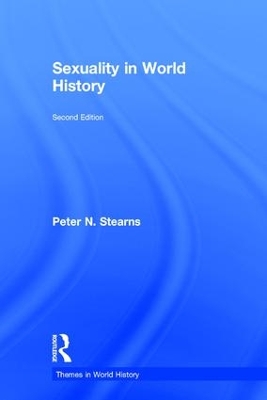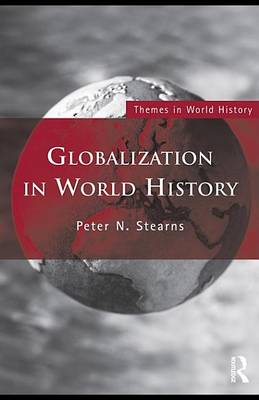Themes in World History
3 total works
In Peace in World History, Peter N. Stearns examines the ideas of peace that have existed throughout history, and how societies have sought to put them into practice. Beginning with the status of peace in early hunter-gatherer and agricultural societies, and continuing through the present day, the narrative gives students a clear view of the ways people across the world have understood and striven to achieve peace throughout history. Topics covered include:
- Comparison of the ‘pax Romana’ and ‘pax Sinica’ of Rome and China
- Concepts of peace in Buddhism, Christianity, and Islam, and their historical impact
- The place of peace in the periods of expanding empires
- The emergence, starting in the 19th century, of formal schemes to promote peace amid increasingly destructive technologies for warfare
Moving away from the view of history as a series of military conflicts, Peace in World History offers a new way of looking at world history by focusing on peace. Showing how concepts of peace have evolved over time even as they have been challenged by war and conflict, this lively and engaging narrative enables students to consider peace as a human possibility.
This book examines sexuality in the past, and explores how it helps explain sexuality in the present. The subject of sexuality is often a controversial one, and exploring it through a world history perspective emphasizes the extent to which societies, including our own, are still reacting to historical change through contemporary sexual behaviors, values, and debates. The study uses a clear chronological structure to focus on major patterns and changes in sexuality—both sexual culture and sexual behaviors—in the main periods of world history, covering topics including:
• The sexual implications of the transition from hunting and gathering economies to agricultural economies;
• Sexuality in classical societies;
• The postclassical period and the spread of the world religions;
• Sex in an age of trade and colonies;
• Changes in sexual behaviors and sexual attitudes between 1750 and 1950;
• Sex in contemporary world history.
This new edition examines these issues on a global scale, with attention to anthropological insights on sexuality and their relationship to history, the dynamics between sexuality and imperialism, sexuality in industrial society, and trends and conflicts surrounding views of sex and sexuality in the contemporary world.
The idea of globalization is currently inescapable, though the term and the theory attached date back only to the 1990s. History helps clarify where globalization comes from, how it relates to broad processes of change, and why it rouses controversy.
In Globalization in World History, Peter N. Stearns argues that although the term is a relatively new one, the process of globalization has roots much further back in time. He shows how tracing this process of change can also help to define the concept of globalization as we understand it today. The book examines major changes in global interactions from 1000 CE onward, and defines four major turning points that have accelerated the process of globalization.
Issues covered include:
- which factors have shaped the process of globalization - including economics, migration, disease transmission, culture, the environment and politics
- how and why reactions to globalization differ across societies - regions examined include Japan, the Middle East, Africa and China
- the advantages and disadvantages brought by globalization.
The book is a vital contribution to the study of world history, and is a useful companion for students of politics and sociology.


